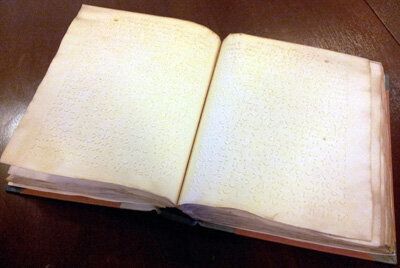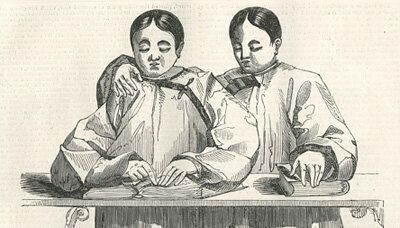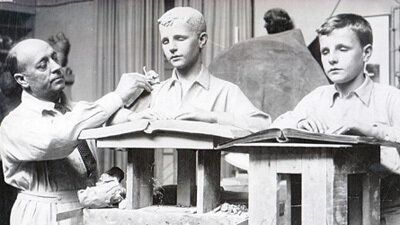Louis Braille, his life and achievements, will be remembered and celebrated this week as part of National Braille Week. Braille was 15 when he developed his tactile code for the French alphabet in 1824, so it is quite remarkable when one imagines what an impact his work has had on the lives of vision impaired people across the world since.
At the Royal London Society for Blind People, we will also be commemorating another man who strove to improve education and opportunities for blind and partially sighted people. This is our founder Thomas Lucas who 175 years ago, on 12 January 1838, established a free school for vision impaired children in London.
Lucas was a modest Bristol merchant and shorthand teacher who believed that blind and partially sighted children should be taught to read so that they could read the bible independently and not have to rely on others to read to them. In the pre-Braille era when there was no standardised reading system for vision impaired people in the UK, Lucas formulated a form of embossed lettering called the Lucas Type based on shorthand strokes.

In 1832 he established a school in Bristol for blind children, where his shorthand and English grammar were taught. Five years later copies of St John's Gospel were published in Lucas Type (similar to the one pictured above) - this same year Lucas was invited to meet the City Fathers in London and showcase his work.
He quickly received much support, and in January 1838 a school was opened on Hart Street in the city of London under the name The London Society for Teaching the Blind to Read (the original name of RLSB), where the Lucas Type was taught to 31 pupils, including Agnes and Laura who are pictured below.
Lucas died that same year, but before his death he wrote: "It is with heartfelt pleasure that I embrace this opportunity of announcing, in the 73rd year of my age, that, through the kind providence of God, the blind are now taught to read in a shorter space of time and as fluently as those who can see.
"By this simple plan finger reading is rendered a most pleasing exercise; so that all who are deprived of sight may be blessed with a little education. Methinks I see and hear some kind of sympathising friends of the blind exclaim 'Oh, what a length of time it must take to teach a poor blind child by this novel method!' and I cannot forebear responding 'No, No, indeed! A very short time will suffice to accomplish this great important work; not more than half the time that would be requisite in the manner we are taught who are blessed with sight, for the blind need few letters, only about half the number we use for any book'."

The use of Lucas Type at the school was superseded in the 1860s by Braille, as it became the universal reading method for blind and partially sighted people. But Lucas' legacy of education and empowerment of vision impaired young people remains, and continues today through RLSB. Along with education, we now offer sport, creative and developmental services to support blind and partially sighted young people to unleash their potential and live and learn for the life they want.
Since 1838, we've been attracting the support of many generous volunteers and donors, including the Royal family, playwright J. B. Priestley and even Charlie Chaplin. Our alumni include Paralympians, writers, musicians, journalists and successful business people.
On our 175th anniversary, we wanted to find a way to pay tribute to Thomas Lucas, our supporters and the young people we have worked with. To do this we have launched a digital exhibition of the fascinating archives that we have amassed over the years, which tell the story of vision impaired young people over the decades - a story rarely shared with the world.

We have selected 365 pieces from our archives of 10,000 items, which feature historical documents dating back to the 1830s, and will publish one each day throughout 2013. These items include:
- Beautiful photographs, poems and letters that capture special moments in the lives of blind young people
- A bible published in 1852, written in the Lucas type. This rare item is one few in existence
- A programme signed by Charlie Chaplin for his film Limelight, which was premiered in 1952 to raise funds for RLSB
The exhibition will be brought to life with blogs, audio and video recordings, and interviews with RLSB alumni, including Paralympic swimmer Darren Leach and leading technology consultant Dr Julia Schofield MBE.
You can learn more about our 175th anniversary digital exhibition at www.rlsb.org.uk/175years
We hope you enjoy it.
